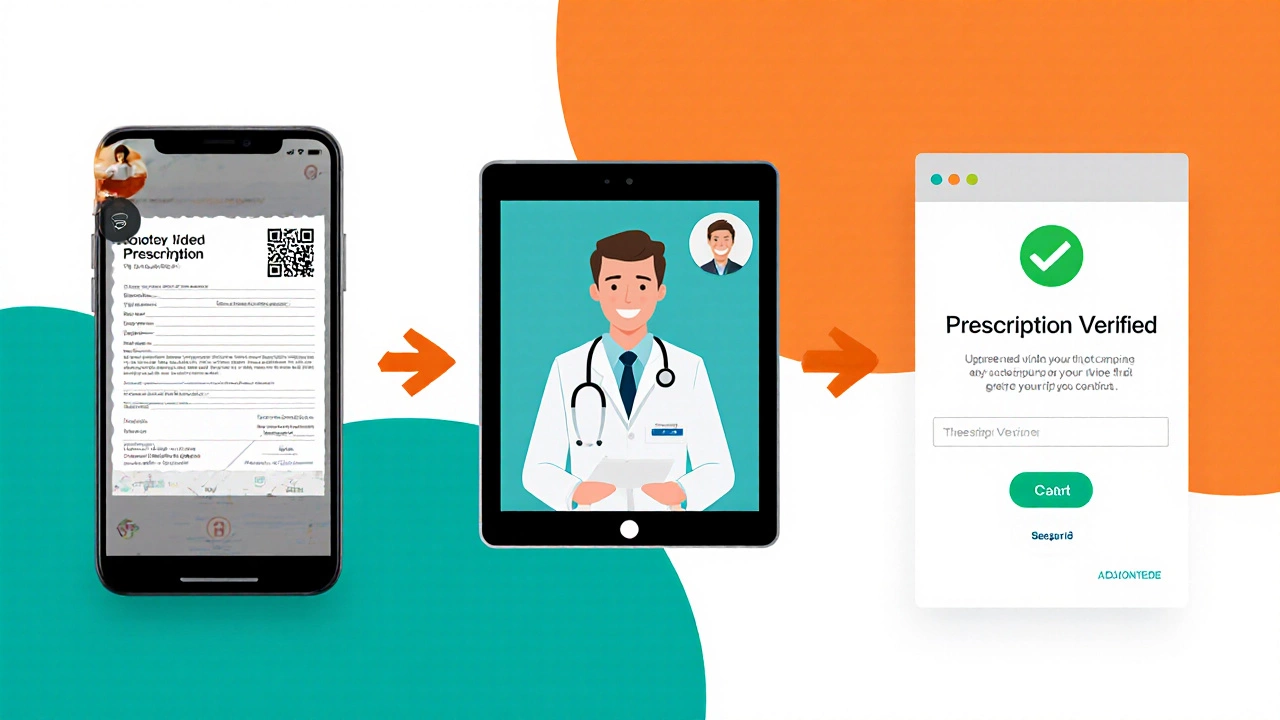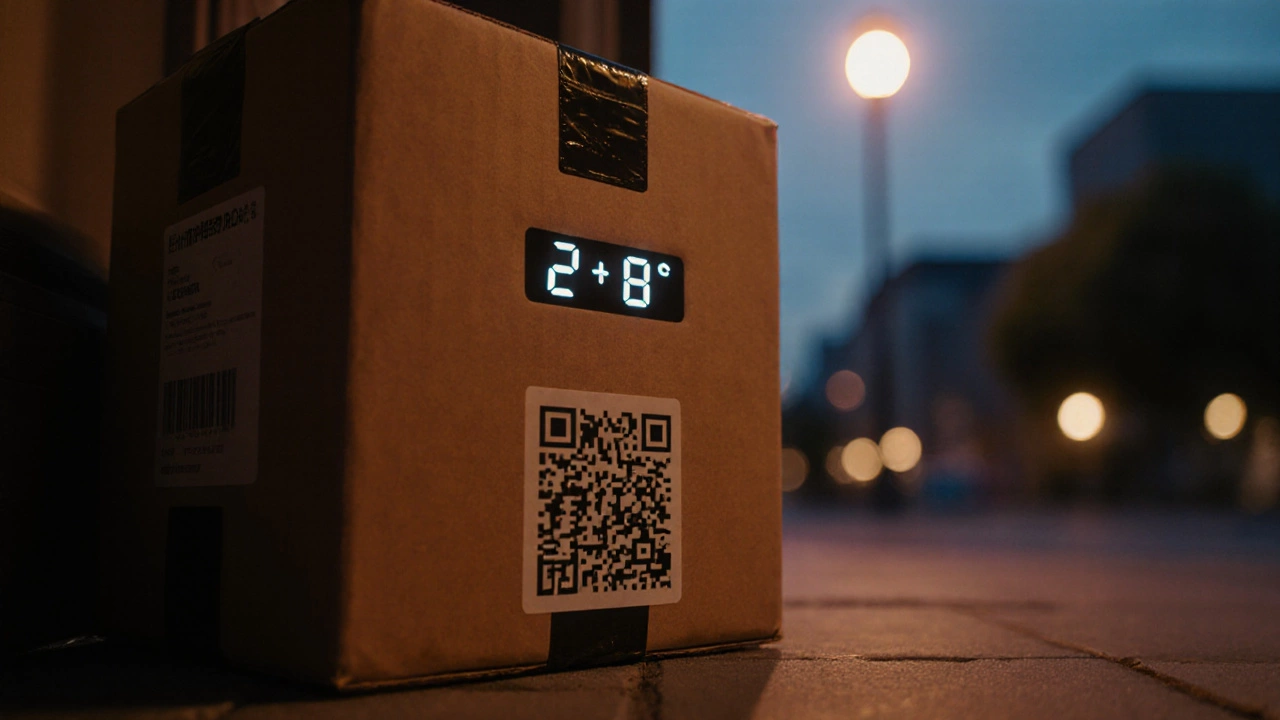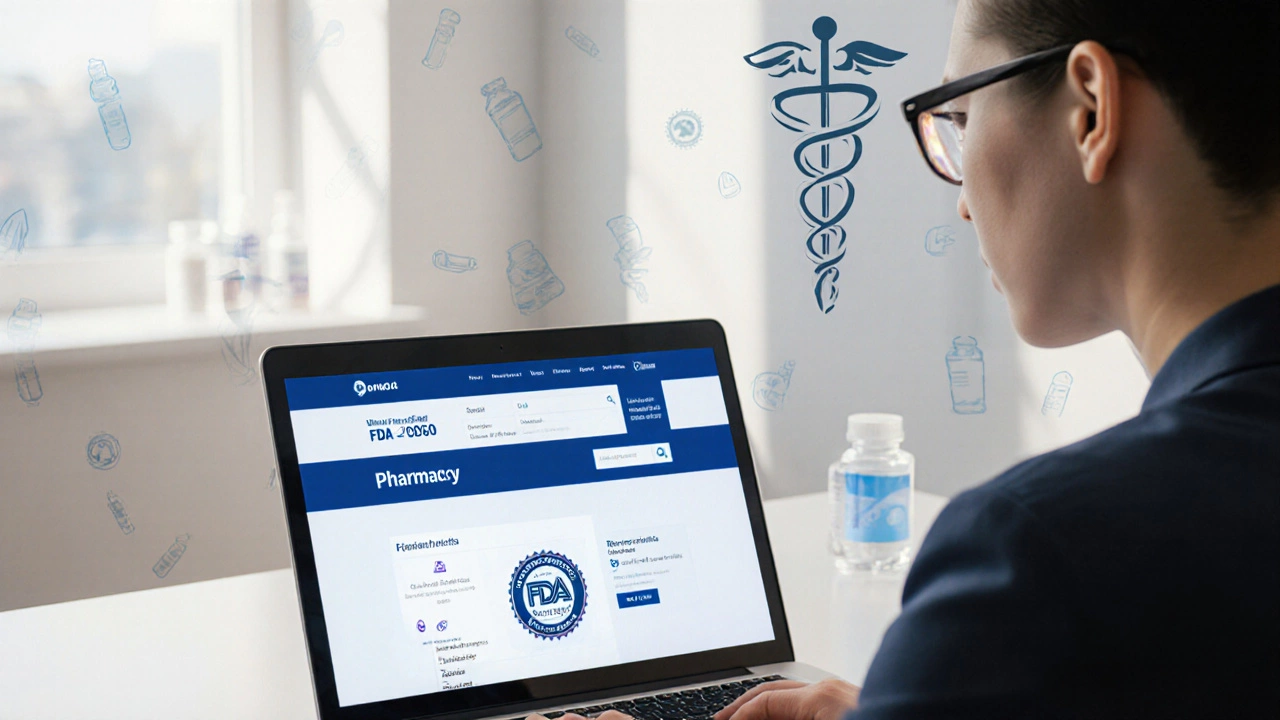Online Pharmacy Safety Checker
Verify Your Online Pharmacy Safety
This interactive checklist helps you verify if an online pharmacy meets essential safety criteria. Check each item as you verify it on the pharmacy's website, then click "Verify Safety" to see the results.
Step 1: Verify License & Regulatory Approval
Step 2: Check Key Safety Criteria
Verification Results
Key Takeaways
- Verify the pharmacy’s license and regulatory approvals.
- Make sure a qualified pharmacist reviews every prescription.
- Look for transparent pricing, secure payment, and clear return policies.
- Check delivery speed, packaging standards, and data‑privacy measures.
- Read verified customer reviews and confirm medication authenticity.
When you click on a online pharmacy is a web‑based platform that sells prescription and over‑the‑counter medicines directly to consumers, you’re trusting a digital storefront with your health, your money, and your personal data. The stakes are high: a bogus site can sell counterfeit pills, expose your health records, or charge hidden fees. This guide walks you through the exact steps you need to take so you can pick a trustworthy service without spending hours on endless research.
1. Confirm the License and Regulatory Body
The first red flag to watch is licensing. In the United States, a legitimate site will display a FDA is the Food and Drug Administration, the agency that inspects and approves pharmacy operations registration number. In India, look for a CDSCO is the Central Drugs Standard Control Organization, which authorizes online medicine sellers badge. A genuine pharmacy will link to the official verification page where you can type the registration ID and see the status.
Why this matters: Licensed pharmacies are subject to regular audits, meaning the drugs they dispense meet safety standards. Unlicensed sites operate under no oversight, making counterfeit medicines a real risk.
2. Prescription Verification Process
A reputable prescription verification is the step where a licensed pharmacist reviews a submitted prescription for authenticity and appropriateness will involve at least one of these methods:
- Upload a clear photo of the doctor’s script.
- Use a secure portal where you can scan the QR code on a printed prescription.
- Live video call with a pharmacist for real‑time confirmation.
If a site simply asks you to “enter the drug name” without asking for a prescription, walk away. The presence of a qualified pharmacist who double‑checks the dosage, potential drug interactions, and patient history is a non‑negotiable safety net.
3. Secure Payment and Pricing Transparency
When you reach the checkout, the site should display a secure payment is an encrypted transaction process that protects card details, typically using SSL/TLS and PCI‑DSS compliance badge (look for https:// and a padlock icon). Acceptable methods include credit/debit cards, UPI (for India), and reputable e‑wallets.
Transparent pricing means you’ll see the drug’s base price, any shipping fees, and taxes before you confirm the order. Beware of “price‑too‑good‑to‑be‑true” offers that hide extra charges until the final step. A good rule of thumb: if the total cost is lower than the average market price by more than 30%, double‑check the source.
4. Delivery Options and Packaging Standards
Speed matters, but so does safety. Look for a pharmacy that offers:
- Tracked, temperature‑controlled shipping for sensitive meds (e.g., insulin).
- Discrete packaging that protects pills from moisture and tampering.
- Clear delivery timeline-most reputable services guarantee delivery within 2‑5 business days for domestic orders.
Some sites partner with courier giants like DHL, FedEx, or local carriers with real‑time tracking APIs. If a pharmacy only offers “standard mail” with no tracking, ask how they handle lost packages and whether they provide a refund or replacement.

5. Verify Medication Authenticity
Counterfeit drugs can contain the wrong active ingredient, incorrect dosage, or even harmful contaminants. A trustworthy medication authenticity is the guarantee that the supplied drug matches the original manufacturer’s specifications, often confirmed through batch numbers and tamper‑evident seals process includes:
- Batch and expiry dates printed on the label.
- QR codes that link to the manufacturer’s verification portal.
- Certificates of analysis (CoA) for high‑risk medications.
If the site can’t provide any of these details, consider it a warning sign.
6. Customer Reviews and Reputation
Real‑world feedback is priceless. Look for:
- Verified purchase reviews on the pharmacy’s own page.
- Third‑party ratings on platforms like Trustpilot, MouthShut, or Google Business.
- Specific comments about prescription handling, delivery punctuality, and after‑sale support.
Beware of sites that showcase only five‑star testimonials without any negative comments. A balanced mix of pros and cons shows authenticity. Also, check how the pharmacy responds to complaints-prompt, courteous replies are a good sign of customer‑centric service.
7. Privacy Policy and Data Protection
Health data is highly sensitive. A proper privacy policy is a publicly accessible document that explains how a company collects, uses, stores, and protects personal information will cover:
- Encryption of medical records during storage and transmission.
- Clear consent for sharing data with third parties (e.g., insurance providers).
- Retention period-how long your prescription history is kept.
If the policy is vague, missing, or hidden behind a “click here” link that leads to a blank page, walk away. Your health information should never be sold or exposed.
8. Telehealth Consultation Availability
Some online pharmacies bundle a telehealth consultation is a virtual medical appointment with a licensed physician or pharmacist, usually via video or chat. This service is especially handy when you need a new prescription or clarification about dosage.
Key features to check:
- Qualified doctors with visible credentials (MD, DO, etc.).
- Same‑day or next‑day appointment slots.
- Integration with the pharmacy’s prescription system so the meds can be dispatched immediately after approval.
While not essential for every purchase, having a telehealth option adds an extra layer of safety and convenience.

Comparison Table: Core Criteria for Choosing an Online Pharmacy
| Criterion | What to Look For | Red Flag |
|---|---|---|
| Licensing | FDA / CDSCO registration number with verification link | Missing or falsified license badge |
| Prescription Verification | Pharmacist review via upload, QR, or video | Allows purchase without any prescription |
| Payment Security | SSL/TLS, PCI‑DSS compliance, multiple payment options | Plain HTTP site or only cash on delivery |
| Delivery | Tracked, temperature‑controlled, 2‑5 days domestic | No tracking, unknown courier, >10 days |
| Pricing Transparency | Itemized cost breakdown before checkout | Hidden fees revealed at final step |
| Customer Support | Live chat, email, phone with 24‑hour response | No contact info or auto‑reply only |
9. Return and Refund Policies
Even with the best checks, a mistake can happen-wrong drug, dosage error, or damaged packaging. A clear return policy is the set of rules that define how a customer can get a refund or replacement if the product does not meet expectations will state:
- Time window (usually 7‑14 days from delivery).
- Whether the pharmacy requires the product to be unopened.
- Who covers return shipping costs.
Read the fine print before you place an order. A site that refuses returns for any reason is a risky choice.
10. Quick Checklist Before You Click ‘Buy’
- Verify the pharmacy’s license number on the regulator’s portal.
- Confirm a pharmacist will review your prescription.
- Ensure payment is protected by SSL/TLS and PCI‑DSS.
- Check delivery method-tracking & temperature control.
- Look for batch numbers, QR verification, or CoA for the drug.
- Read at least three verified customer reviews.
- Make sure there’s a readable privacy policy.
- Know the return/refund timeline and conditions.
- If possible, use a telehealth service for prescription confirmation.
Running through this list takes less than five minutes but can save you from costly health risks and financial headaches.
Next Steps & Troubleshooting
If you’ve found a pharmacy that meets most of the criteria but something still feels off, try these shortcuts:
- Call the customer service line and ask for the pharmacist’s name and registration number.
- Search the pharmacy’s name on the Better Business Bureau is a nonprofit organization that tracks consumer complaints and business ratings or local consumer forum.
- Ask your own physician whether they have heard of the service.
If the answers are vague or you receive conflicting information, it’s safest to choose a different provider.
Frequently Asked Questions
How can I verify an online pharmacy’s license?
Look for the regulator’s registration number (FDA in the U.S., CDSCO in India) on the site’s footer. Click the provided link to the official verification portal and enter the ID. If the site’s badge leads to a 404 page or the number is missing, avoid the pharmacy.
Can I use an online pharmacy without a prescription?
Legitimate pharmacies will never dispense prescription‑only medicines without a verified prescription. Some over‑the‑counter items may be bought without one, but anything that requires a doctor’s order must go through a pharmacist’s review.
What should I do if I receive a counterfeit drug?
Contact the pharmacy’s customer support immediately, request a full refund, and report the incident to the regulator (FDA or CDSCO). Keep the medication, packaging, and any batch numbers as evidence for the investigation.
Is it safe to store my health data on an online pharmacy’s portal?
Only if the portal uses end‑to‑end encryption (HTTPS) and has a clear privacy policy that states data will not be sold. Look for certifications like ISO 27001 for information security.
How long does delivery usually take for temperature‑sensitive meds?
Most reputable services promise 2‑5 business days with temperature‑controlled packaging. Expedited options may deliver within 24‑48 hours for an additional fee.
